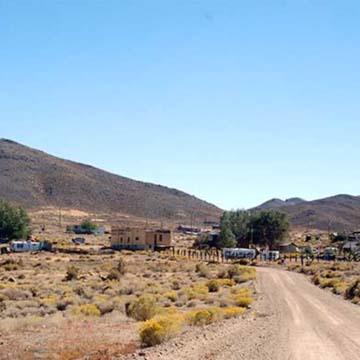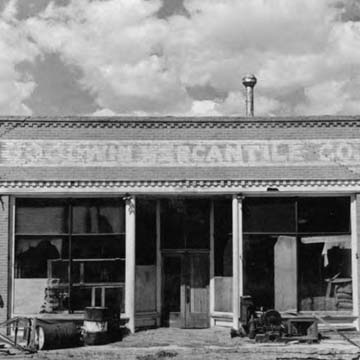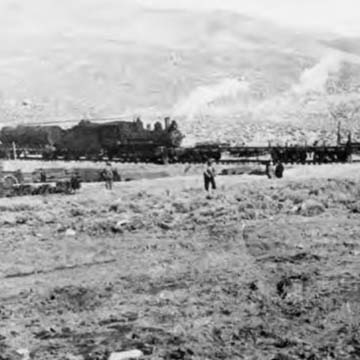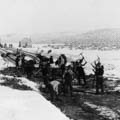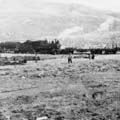Gold Hill is Utah’s most expansive and desolate ghost town. It is located in a remote area at the foot of the Deep Creek Mountains in western Utah near the Nevada border. Gold was first discovered in the area in 1858, and the first smelter was built in 1871. In addition to gold, silver, copper, and lead, tungsten and arsenic were also mined in this area. The town was established in 1892 and grew quickly.
Due to the extensive mining operations, the richest mines were worked out within a decade and the town was largely abandoned. But Gold Hill experienced a resurgence during World War I, when demand grew for arsenic to kill the boll weevil, a beetle that infested cotton crops. The mines were reopened and workers built new mills. Construction of a post office and the Deep Creek Railroad connected Gold Hill to distribution centers in the American South, where much of the cotton industry resided. The line ran from Wendover down the state line to the emerging mining center. Reaper #3, a small, 45-foot-long shaft, brought in over $80,000 in just a few years. During its heyday, the town had a population of 3,000 and boasted stores, salons, pool halls, and a newspaper, in addition to the post office. The town’s architecture was hastily built and consisted mainly of simple wood-framed structures. Roads crisscrossed and circled around the settlement, and mine shafts were carelessly dug throughout town, even appearing in the middle of streets. The focus was on speed, efficiency, and economy, rather than endurance or civic symbolism. Miners lived in tents rather than permanent buildings, which allowed them to relocate as needed. Mining companies were fully cognizant that mining depleted resources, and a town was lucky if it survived twenty years.
Demand for arsenic decreased by the 1920s, and the town was once again abandoned. But Gold Hill experienced a second resurgence during World War II, when the demand for tungsten for steel and electric filaments led to the reopening of the mines. During this period, the town was repaired and became part of the electric grid. A schoolhouse was established and a bowling alley built. Productivity did not last long, however, and the town was abandoned again after just sixteen months. The schoolhouse was shuttered in 1946 and the post office closed in 1949.
Today, Gold Hill has around fifty residents. They are served by a lone mercantile center with brick structure and a false facade. A few sole edifices remain in the stark landscape.








